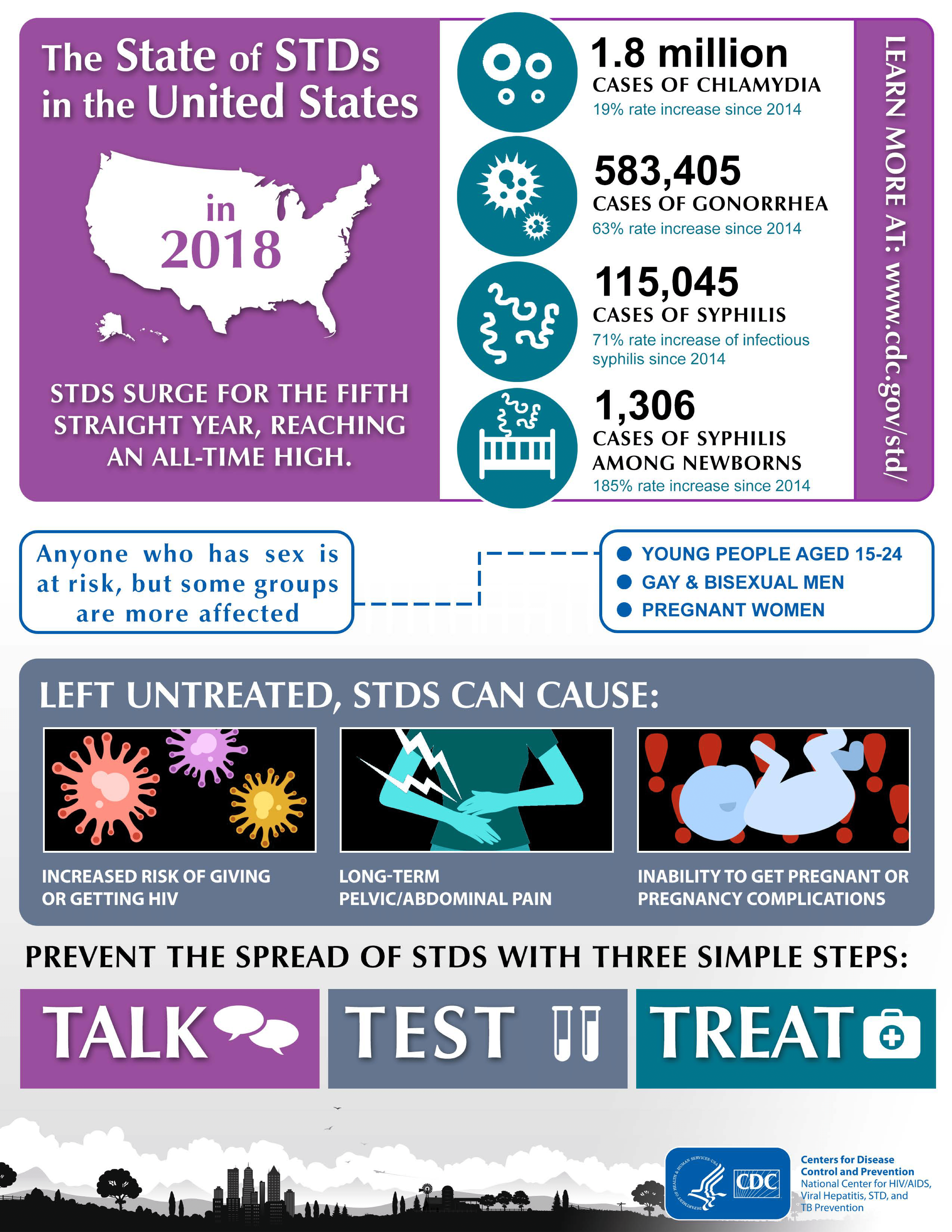Women's Health: Facts about Birth Control, STIs and Condoms

Written By: Kelly P. Boutin MEd, Bryant University; Matthew W. Henninger, BA, University at Buffalo, The State University of New York; Amy M. Loree, PhD, Henry Ford Health System; Adati Tarfa, PharmD, University of Wisconsin-Madison; Julie E. Volkman, PhD, Bryant University; University of Massachusetts Medical School
There are many myths and facts when it comes to women’s health and STIs. We have put together facts about STIs, birth control and STIs, and more.
Fact: People can still get STIs despite increased awareness.
A Sexually Transmitted Infection (STI) is a bacterial or viral infection that is passed from one person to another through sexual contact (i.e., anal, vaginal, or oral). More than 25 STIs have been identified, affecting 20+ million men and women in the U.S. each year.
Anyone who is sexually active can get an STI, even without having penetrative sex (i.e., vaginal or anal sex). Some STIs, like herpes and HPV, are spread by skin-to-skin contact. Many STIs don’t show symptoms for a long time. Even without the presence of symptoms, they can still be harmful and passed between partners during sex (i.e., anal, vaginal, or oral).
STIs occur in all parts of the population.
- Young adults between the ages of 15 to 24 account for nearly half of all new STIs infections each year.
- Racial and ethnic minority groups are experiencing significant increases in STI rates. In 2017, the rate of reported cases of Chlamydia among Black females was five times the rate of White females and 6.6 times greater in Black males than White males.
- STI rates have significantly increased within the LGBTQIA+ community. A 2018 CDC report states Gonorrhea diagnoses nearly doubled between 2013-2018 in gay and bisexual men, and men who have sex with men (MSM). Data from 2018 indicate that gay and bisexual men accounted for 54% of all syphilis cases.
- People 60+ account for the largest increase of in-office STI treatment. Between 2014-2017, rates for Herpes simplex, Gonorrhea, Syphilis, Hepatitis B, Trichomoniasis, and Chlamydia rose 23% in this population.
- Women who are pregnant can become infected with the same STDs as women who are not pregnant.
Fact: Oral contraceptives (birth control) cannot prevent an STI.
A common myth is that birth controls can prevent the spread of STIs. Two of the most common forms of birth controls are oral contraceptives and condoms. Many people may not use condoms because they are using another form of birth control, and feel they are safe from STIs.
- Oral contraceptives are medications in pill form taken by mouth as birth control.
- Oral contraception is only effective in preventing pregnancy and cannot stop STIs from being passed between sexual partners.
- Condoms are a barrier method of birth control used to prevent pregnancies and the spread of STIs.
- Only one form of birth control prevents pregnancies and STIs: condoms.
Fact: Condoms can prevent an STI.
Correctly using male and female condoms can help prevent the spread of STIs and help prevent pregnancy. Dental dams, a barrier method for oral sex, can also help prevent STIs when used correctly. Most condoms and dental dams are made from latex or polyurethane, which may be preferable for individuals with a latex allergy.
Where to Find and How to Use Condoms
- For information on the do’s and don’ts of using male condoms, female condoms, and dental dams (including how to make a dental dam out of a condom), see: https://www.cdc.gov/condomeffectiveness/index.html
- You can purchase condoms at your local pharmacy or drug store. Condoms are also available (free or a small fee) at your local health department, Planned Parenthood, and possibly your school health clinic.
- To find an organization in your area that offers condoms, check out the Find Condoms search engine: https://npin.cdc.gov/web-tools/condom-finder-widget
Fact: Resources are available to help prevent STIs.
Interactive Web Infographic: https://www.cdc.gov/std/prevention/lowdown/index.html
Preventing HIV, HPV and Other STIs
- PrEP stands for pre-exposure prophylaxis; also known as brand names Truvada and Descovy. It’s a daily pill that can help prevent HIV. Recommended for adults 18 years and older and currently HIV negative.
- HPV vaccine can help protect against certain types of HPV that can lead to cancer or genital warts; also known as the brand Gardasil 9. The vaccine is given in a series of shots over a period of time.
- Abstinence can avoid infection by not having sex (i.e., anal, vaginal, or oral).
Treating STIs
- Antibiotics are one way to cure sexually transmitted bacterial and parasitic infections, including gonorrhea, syphilis, chlamydia, and trichomoniasis. It is important to take medication as described. Also, abstain from sex until 7 days have passed after completing antibiotic treatment and any sores are healed.
- Antiviral drugs can be prescribed if you have herpes or HIV. These can help keep infections in check, but you will still carry the virus.
Resources
- Centers for Disease Control and Prevention: https://www.cdc.gov/std/default.htm,
- GSA Network: https://gsanetwork.org/resources/sexual-health/
- Planned Parenthood: https://www.plannedparenthood.org/learn/stds-hiv-safer-sex
- Mayo Clinic: https://www.mayoclinic.org/diseases-conditions/sexually-transmitted-diseases-stds/symptoms-causes/syc-20351240
- National Public Health Information Coalition: https://www.nphic.org/toolkits/std
- National Women’s Health Resource Network: https://www.nwhn.org/
- STD Testing Locations: https://www.stdcheck.com/std-test-center.php
- State health departments: https://www.cdc.gov/publichealthgateway/healthdirectories/healthdepartments.html
If health insurance is a problem, please visit:
- Lemonaid: https://www.lemonaidhealth.com/
- Maven Clinic: https://www.mavenclinic.com/
More Articles

Women’s Heart Health Part 1: What to Know about Women and Heart Disease across the Lifespan
Women’s health issues can uniquely contribute to a woman’s risk for heart disease across the lifespan. This is the first part of a three-part series on Women's Heart Health.

7 Myths about the HPV Vaccine: HPV Vaccine Facts and the Science Behind Them
Learn the myths and know the facts about HPV Vaccines. The science behind the HPV Vaccinations.



